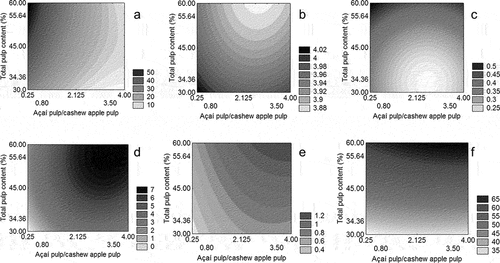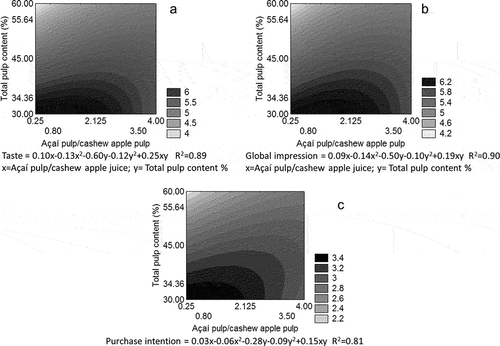Figures & data
Table 1. Compositions of the mixed fruit nectars.
Table 2. Physicochemical analysis of pasteurized cashew apple and açai pulps.
Table 3. Chemical characterization of blended tropical fruit nectars pasteurized composed of cashew apple and açai pulps (mean values of triplicate determinations ± standard deviation).
Table 4. Regression coefficients of the second-order polynomial and their significance.
Figure 1. Response surface of blended tropical fruit nectars composed of cashew apple and açai pulps: (a) ascorbic acid content; (b) pH; (c) titratable acidity; (d) total anthocyanins; (e) color (e) and (f) total phenols.

Table 5. Sensory attributes of blended tropical fruit nectar composed of cashew apple and açai pulps (mean values of triplicate determinations ± standard deviation).
Table 6. Regression coefficients of the second-order polynomial and their significance.

